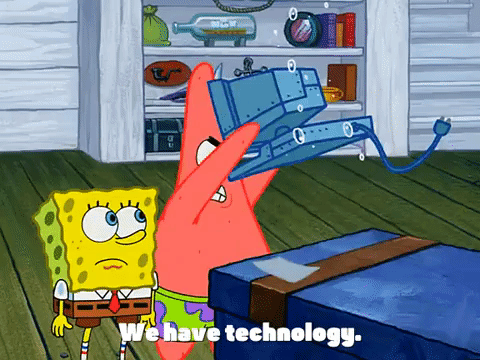The Dispatch: Week 5
Do you think GM's double down bet on Super Cruise will pay off? QNX + MSFT, Honda software woes.
Prefer audio? Listen here:
HAPPY LUNAR NEW YEAR and welcome to this week's edition of The Dispatch, where we break down the latest SDV news, cut through the noise, and tell you what actually matters. No fluff, no endless news lists—just the key moves (and our 2 cents) on what’s shaping the future of automotive software, AI and data-driven mobility innovation. Let’s get into it.
🚀 Top Story
GM's Super Cruise: New Direction After Robotaxi Retreat
General Motors is shifting gears, focusing on its Super Cruise driver assistance system following setbacks in its robotaxi endeavors. Super Cruise already offers hands-free driving on over 200,000 miles of mapped highways, but GM wants to scale it up, BIG TIME. The goal? $2 billion in annual revenue within five years through…you guessed it, software subscriptions.
💡 Our Take: It’s brilliant — leaning on software subscriptions instead of hardware margins. The road to full autonomy is long and littered with setbacks. So by doubling down on Super Cruise, GM is betting that incremental automation, not robotaxis, is a big money maker for SDVs. We’ll be watching to see how competitors like Ford (BlueCruise) and Tesla (FSD) respond.
👀 What We’re Tracking
QNX and Microsoft's Cloud Collaboration
BlackBerry QNX announced they’ve teamed up with Microsoft to streamline the development of Software-Defined Vehicles. By integrating QNX's Software Development Platform 8.0 with Microsoft Azure, automakers can now build, test, and refine vehicle software fully in the cloud, accelerating innovation and reducing development cycles.
💡 Big Picture: We like it. Cloud-based development is the future. It allows automakers to prototype faster, iterate smarter, and roll out updates seamlessly. The old model—long development cycles, limited testing, and slow feature rollouts—just doesn’t cut it anymore. This is a major step toward software-driven innovation at scale.
Intel's Next-Gen Automotive Platform
Intel has announced its second-generation Intel® Arc™ B-series Graphics for Automotive, set for production by the end of 2025. This platform aims to simplify the transition to software-defined vehicles by reducing supply chain complexities and vehicle bill of materials. The emphasis is on flexibility and scalability to meet the evolving needs of modern automotive architectures.
💡 Why It Matters: Intel's move addresses a critical bottleneck in SDV development: hardware-software integration. By offering a scalable and flexible platform, Intel enables automakers to focus more on software innovation rather than hardware constraints. This could lead to faster deployment of advanced features and a more seamless user experience.
📰 Industry Pulse
Honda's New In-House EV Operating System
Honda is stepping up its game with the development of its proprietary Asimo operating system, set to debut in the upcoming Acura RSX in 2026. This move marks Honda's entry into the software-defined vehicle arena, aiming to enhance vehicle performance and user experience through integrated software solutions.
Honda's decision to develop an in-house operating system is a bold move toward greater control over vehicle software. While it positions them to better compete with their tech-savvy rivals, the success of this initiative will hinge on their ability to deliver a seamless and intuitive user experience. It's a high-stakes bet that could pay off if executed well.
Honda Round 2: Honda Recalls 295,000 Vehicles Over Fuel Injection Software Glitch
Honda announced the initiation of a recall on January 29, affecting nearly 295,000 vehicles (Acura MDX and TLX models and Honda Pilots) in the U.S. due to a software error in the fuel injection electronic control unit that could lead to engine stalling or loss of power. Scary. Owners are advised to visit authorized dealerships for a complimentary software update to rectify the issue. Say what?
Doesn’t appear OTA (Over-the-Air) can save the day here, as owners are being advised to visit the dealer. Let’s do some math. Let’s say it’s a $200 at the dealer to fix the problem, that’s a $59,000,000 cost to Honda. Wow. Versus an OTA software fix at say $2 per vehicle, that’s—$590,000. Quite the difference. Not to mention the ability to fix potentially affected units faster. This serves as a reminder that as we advance toward more complex SDVs, robust software development is paramount to maintaining consumer trust and safety. And that also the ability to update safety critical ECUs via an OTA fix can save a lot of time and money for everybody.
📊 Market Trends & Insights
In Case You Missed It: IBM Study on AI-Powered SDVs by 2035
A recent IBM study reveals that 74% of automotive executives believe vehicles will be software-defined and AI-powered by 2035. Additionally, 75% of respondents consider the software-defined experience as central to brand value. The industry is shifting from one-time car sales to recurring revenue models centered on digital services and products.
IBM’s report speaks truth. The shift toward AI-powered, software-defined vehicles is not just a trend but a fundamental transformation in the automotive industry. Automakers that embrace this change and invest in software development are likely to lead the market, while those clinging to traditional models may find themselves left behind. It's adapt or die in this new digital automotive era.
💡 That’s a Wrap
That's all for this week's edition of The Dispatch! What trends are you tracking? Reply and let us know.
See you next week,
SDV Insider Staff







